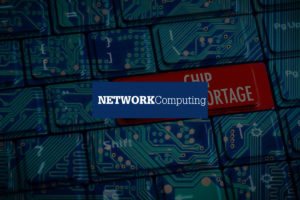Semiconductor-Electronics
Research and Development Tax Incentives for the Semiconductor-Electronics Industry
Many companies in the semiconductor-electronics industries are not aware that the government offers generous research and development (R&D) incentive programs. Even those that are aware often fail to capture the full extent of R&D tax credits that they are entitled. For example, many companies may be capturing relevant expenses from their R&D cost centers, but not all qualifying R&D activities take place in traditional R&D departments. In many companies, prototyping, process development, and testing happen in the plant or on the shop floor, and thus may be overlooked for purposes of the R&D tax credit. If you think you have to have a PhD and a state-of-the-art laboratory to be conducting qualified activities as defined by the Internal Revenue Code, think again.
Examples of Semiconductor-Electronics Innovations Eligible for R&D Tax Incentives Include the Following:
- Designing new and improved wireless, Bluetooth, RFID, and other networking devices
- Designing new and improved dynamic memory (DRAM), microprocessors (MPUs), application specific integrated circuits (ASICs), digital signal processors (DSPs), or programmable memory (EPROM, EEPROM, and Flash)
- Developing new applications for existing technology
- Developing yield enhancement processes
- Developing new and improved integrated circuit packing methodology
- Developing new and improved processes in lithography, thin films, copper interconnects, low-k dielectrics, and metal gates
- Implementing factory automation and other automated efficiency improvements including robotic automation
- Developing processes and equipment for 200mm to 300mm fab conversion
- Conducting research and development of future 450mm processes and technology
- Scaling down micro-architecture from 45nm to 11nm and beyond
- Conducting tests to satisfy foreign regulatory requirements
- Developing of new assays and testing methods/protocolsDeveloping new or improved manufacturing processes and techniques
- Developing new or improved consumer and commercial electronic devices and equipment
- Generating prototypes and first articles of new products for testing and validation
- Developing new or improved technologies
alliantgroup’s Semiconductor and Electronics Team
In order to better serve plant semiconductor, electrical service, and consumer and commercial electronics firms, alliantgroup has developed an Industry Specialization Program to focus exclusively on the qualification and quantification of R&D tax benefits for companies operating in the diverse areas that comprise the semiconductor and electronics industries. This program employs individuals who have educational backgrounds and hands-on research and development experience within the scientific disciplines of electrical, mechanical, chemical, and industrial engineering. alliantgroup has qualified and quantified credits for corporations ranging from small private consumer and commercial electronics firms to large, multi-national, publically traded semiconductor and electronics firms.
- All Manufacturing
- Aerospace
- Apparel and Textiles
- Automotive
- Building Systems Controls
- Chemical
- Electronics
- Feed Mills
- Firearms & Ammunition
- Food & Consumer Packaged Goods
- Foundries
- Furniture & Cabinets
- Job Shops
- Life Sciences
- Medical Equipment
- Metals
- Oil & Gas
- Plastic Injection Molding
- Semiconductor-Electronics
- Shipbuilding / Marine
- Telecommunications
- Tool & Die
Download our free Manufacturing R&D Tax Credit white paper to better understand recent regulatory changes and IRS requirements.


The Battle To Reshore US Supply Chains Starts In China
US businesses can take advantage of the R&D credit to onshore production & minimize the risks associated with long and …

Key Tax Credits Can Help Automation Businesses Get Ahead
With the start of another tax season, businesses in the automation and manufacturing industries are forced to evaluate how persisting …

Chip Shortage Update
The global chip shortage is continuing to hamper enterprises worldwide, ranging from vehicle manufacturers to mobile phone makers, as well …